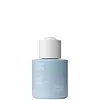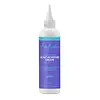What's inside
What's inside
 Key Ingredients
Key Ingredients

 Benefits
Benefits

 Concerns
Concerns

No concerns
 Ingredients Side-by-side
Ingredients Side-by-side

Water
Skin ConditioningPentylene Glycol
Skin ConditioningPropanediol
SolventGlycerin
HumectantSodium PCA
HumectantSodium Lactate
BufferingArginine
MaskingSodium Hyaluronate
HumectantSodium Gluconate
Skin ConditioningAspartic Acid
MaskingPCA
HumectantCaprylhydroxamic Acid
Hyaluronic Acid
HumectantSodium Anisate
AntimicrobialGlycine
BufferingAlanine
MaskingSerine
MaskingValine
MaskingProline
Skin ConditioningThreonine
Isoleucine
Skin ConditioningHistidine
HumectantPhenylalanine
MaskingWater
Skin ConditioningCetearyl Alcohol
EmollientGlycerin
HumectantIsopropyl Palmitate
EmollientNiacinamide
SmoothingTriolein
Skin ConditioningStearamidopropyl Dimethylamine
EmulsifyingBehentrimonium Chloride
PreservativeStearic Acid
CleansingPolysorbate 20
EmulsifyingButyrospermum Parkii Butter
Skin ConditioningAloe Barbadensis Leaf Juice
Skin ConditioningRosmarinus Officinalis Extract
AntimicrobialCentella Asiatica Extract
CleansingCocos Nucifera Oil
MaskingHydroxystearic Acid
CleansingMenthol
MaskingCitric Acid
BufferingPentaerythrityl Tetra-Di-T-Butyl Hydroxyhydrocinnamate
AntioxidantSodium Phytate
Sodium Benzoate
MaskingPotassium Sorbate
PreservativeParfum
MaskingWater, Cetearyl Alcohol, Glycerin, Isopropyl Palmitate, Niacinamide, Triolein, Stearamidopropyl Dimethylamine, Behentrimonium Chloride, Stearic Acid, Polysorbate 20, Butyrospermum Parkii Butter, Aloe Barbadensis Leaf Juice, Rosmarinus Officinalis Extract, Centella Asiatica Extract, Cocos Nucifera Oil, Hydroxystearic Acid, Menthol, Citric Acid, Pentaerythrityl Tetra-Di-T-Butyl Hydroxyhydrocinnamate, Sodium Phytate, Sodium Benzoate, Potassium Sorbate, Parfum
Ingredients Explained
These ingredients are found in both products.
Ingredients higher up in an ingredient list are typically present in a larger amount.
Glycerin is already naturally found in your skin. It helps moisturize and protect your skin.
A study from 2016 found glycerin to be more effective as a humectant than AHAs and hyaluronic acid.
As a humectant, it helps the skin stay hydrated by pulling moisture to your skin. The low molecular weight of glycerin allows it to pull moisture into the deeper layers of your skin.
Hydrated skin improves your skin barrier; Your skin barrier helps protect against irritants and bacteria.
Glycerin has also been found to have antimicrobial and antiviral properties. Due to these properties, glycerin is often used in wound and burn treatments.
In cosmetics, glycerin is usually derived from plants such as soybean or palm. However, it can also be sourced from animals, such as tallow or animal fat.
This ingredient is organic, colorless, odorless, and non-toxic.
Glycerin is the name for this ingredient in American English. British English uses Glycerol/Glycerine.
Learn more about GlycerinWater. It's the most common cosmetic ingredient of all. You'll usually see it at the top of ingredient lists, meaning that it makes up the largest part of the product.
So why is it so popular? Water most often acts as a solvent - this means that it helps dissolve other ingredients into the formulation.
You'll also recognize water as that liquid we all need to stay alive. If you see this, drink a glass of water. Stay hydrated!
Learn more about Water